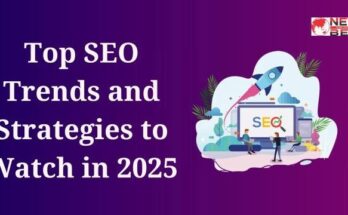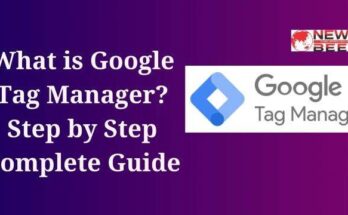Social media marketing has undergone a remarkable evolution since its inception, transforming the way businesses and individuals connect, communicate, and promote their products and services. In this comprehensive exploration, we will delve into the multifaceted journey of social media marketing, tracing its evolution from the early days of MySpace to the emerging realm of the Metaverse. This 2800-word essay will navigate through the major milestones, trends, and challenges that have shaped the landscape of social media marketing, highlighting its significance in today’s digital age.
I. The Birth of Social Media
1.1 The Pre-Social Media Era
Before delving into the evolution of social media marketing, it is essential to understand the context of the pre-social media era. The internet was already an established medium for communication and information exchange, primarily through email and websites. However, there was a lack of interactive platforms that allowed users to connect and share content easily.
1.2 Emergence of MySpace
In the early 2000s, the first true social media platform, MySpace, emerged. MySpace allowed users to create profiles, connect with friends, and customize their pages with music and graphics. This marked the beginning of social networking and set the stage for the evolution of social media marketing.
II. The Rise of Facebook
2.1 The Facebook Phenomenon
In 2004, Mark Zuckerberg and his team launched Facebook, which would go on to revolutionize social media and marketing. Facebook’s user-friendly interface, real-name policy, and exclusive college network membership made it an instant hit among young adults. The platform’s growth was explosive, and it quickly surpassed MySpace in popularity.
Also, Read This: What is Digital Marketing in Hindi
2.2 Early Social Media Marketing on Facebook
Businesses soon recognized Facebook’s potential as a marketing tool. They created brand pages, engaged with users through posts and ads, and encouraged customers to “like” their pages. This marked the birth of social media marketing as a distinct discipline, with companies seeking to leverage the platform’s vast user base to build brand awareness and drive sales.
III. The Age of Microblogging
3.1 Twitter: The Birth of Microblogging
Twitter, launched in 2006, introduced the concept of microblogging, allowing users to share short, 140-character messages known as tweets. Twitter’s real-time nature made it a powerful tool for sharing news, updates, and engaging with a global audience. It became a vital platform for social media marketing, particularly for real-time marketing during events and crises.
3.2 Influencer Marketing Emerges
As Twitter and other social platforms grew, so did the influence of individuals with large followings, known as influencers. Brands began collaborating with influencers to reach specific target audiences authentically. This marked the rise of influencer marketing, a strategy that would soon become a cornerstone of social media marketing.
IV. Visual Content and the Instagram Era
4.1 Instagram’s Visual Appeal
Instagram, launched in 2010, capitalized on the growing appetite for visual content. The platform focused on photo and video sharing, enabling users to tell their stories through imagery. Instagram’s user-friendly features, such as filters and hashtags, made it a hub for creativity and self-expression.
4.2 The Power of Visual Storytelling
Brands quickly recognized the potential of Instagram for storytelling. They started sharing behind-the-scenes content, user-generated content, and visually appealing product shots. Instagram’s engagement rates soared, cementing the importance of visual content in social media marketing.
V. The Video Revolution
5.1 The Emergence of YouTube
YouTube, founded in 2005, became the go-to platform for video sharing. As smartphones gained popularity, video content consumption skyrocketed. Businesses started creating YouTube channels, sharing tutorials, product demos, and entertainment content. This marked the beginning of video marketing’s rise in the social media landscape.
5.2 Facebook Video and Live Streaming
Facebook responded to the video trend by introducing native video uploads and live streaming features. These developments enabled brands to engage with their audience in real-time, creating interactive and immersive marketing experiences.
VI. The Advent of Social Commerce
6.1 The E-Commerce Integration
Social media platforms began integrating e-commerce features, allowing users to shop directly within the app. Facebook introduced the “Buy” button, Instagram added “Shoppable Posts,” and Pinterest introduced “Buyable Pins.” This convergence of social media and e-commerce gave rise to social commerce, enabling brands to sell products seamlessly to engaged audiences.
6.2 Chatbots and Customer Service
Alongside social commerce, chatbots gained prominence on platforms like Facebook Messenger. These AI-powered bots enabled brands to provide instant customer support, answer queries, and facilitate transactions, further blurring the lines between marketing and customer service.
VII. The Impact of Algorithms
7.1 Algorithmic Changes
As social media platforms matured, algorithms became a significant factor in content distribution. Platforms like Facebook and Instagram began prioritizing content based on user engagement, relevance, and recency. This shift forced brands to adapt their social media marketing strategies to maximize organic reach.
7.2 The Rise of Paid Advertising
With decreasing organic reach, brands increasingly turned to paid advertising on social media platforms. Advertisers could target specific demographics, behaviors, and interests, ensuring their content reached the most relevant audience segments. Paid social media advertising became an integral part of marketing campaigns.
VIII. Data Privacy and Regulation
8.1 Privacy Concerns
The increasing collection and utilization of user data for ad targeting raised privacy concerns. Scandals like the Cambridge Analytica controversy brought data privacy issues to the forefront, leading to increased scrutiny and demands for regulation.
8.2 GDPR and CCPA
In response to these concerns, regulations like the General Data Protection Regulation (GDPR) in Europe and the California Consumer Privacy Act (CCPA) in the United States were enacted. These regulations imposed strict rules on data collection, usage, and user consent, forcing businesses to adapt their social media marketing practices.
IX. The Era of Stories
9.1 Snapchat’s Influence
Snapchat introduced “Stories” in 2013, a feature that allowed users to share photos and videos that disappeared after 24 hours. This concept was later adopted by Instagram, Facebook, and WhatsApp. Stories quickly became a popular format for sharing ephemeral content and engaging with audiences.
9.2 Stories for Brands
Brands embraced Stories as a way to showcase their products and engage with followers authentically. The format’s temporary nature encouraged timely content creation, fostering a sense of urgency and exclusivity among audiences.
Also, Read This: What is SEO? Type and Key Factors of SEO
X. The Metaverse and Beyond
10.1 The Metaverse Vision
As of my last knowledge update in September 2021, the concept of the Metaverse was gaining traction. The Metaverse represents a virtual, interconnected space where users can interact, socialize, work, and play. While it was not fully realized at that time, it had the potential to revolutionize social media marketing by creating entirely new immersive experiences for brands and consumers.
10.2 Implications for Social Media Marketing
The Metaverse could redefine social media marketing by offering virtual showrooms, immersive brand experiences, and opportunities for businesses to engage with audiences in unprecedented ways. However, it also presents challenges related to privacy, data security, and the need for brands to adapt to entirely new digital ecosystems.
Conclusion
The evolution of social media marketing has been marked by a transformative journey from its early days of simple organic posts to a sophisticated landscape driven by data analytics, influencer collaborations, and paid advertising. As platforms continually adapt and user behaviors evolve, businesses must remain agile in their strategies to effectively engage and convert their target audiences. In conclusion, social media marketing has become an indispensable tool for modern businesses, demanding a dynamic approach that combines creativity, authenticity, and data-driven precision to thrive in an ever-changing digital landscape.




